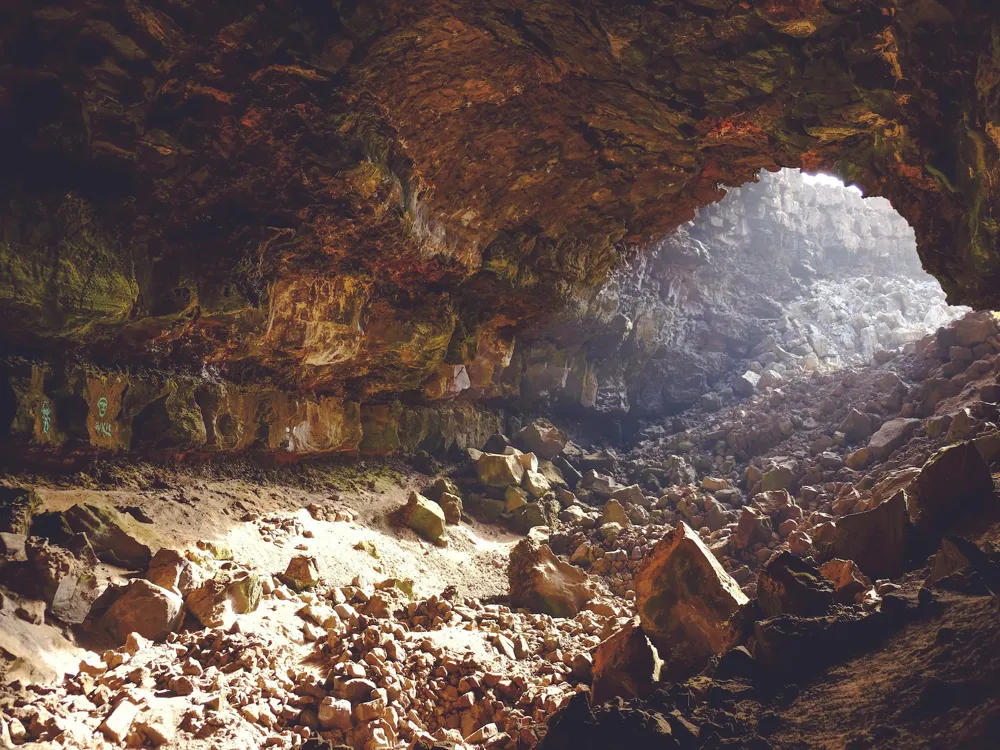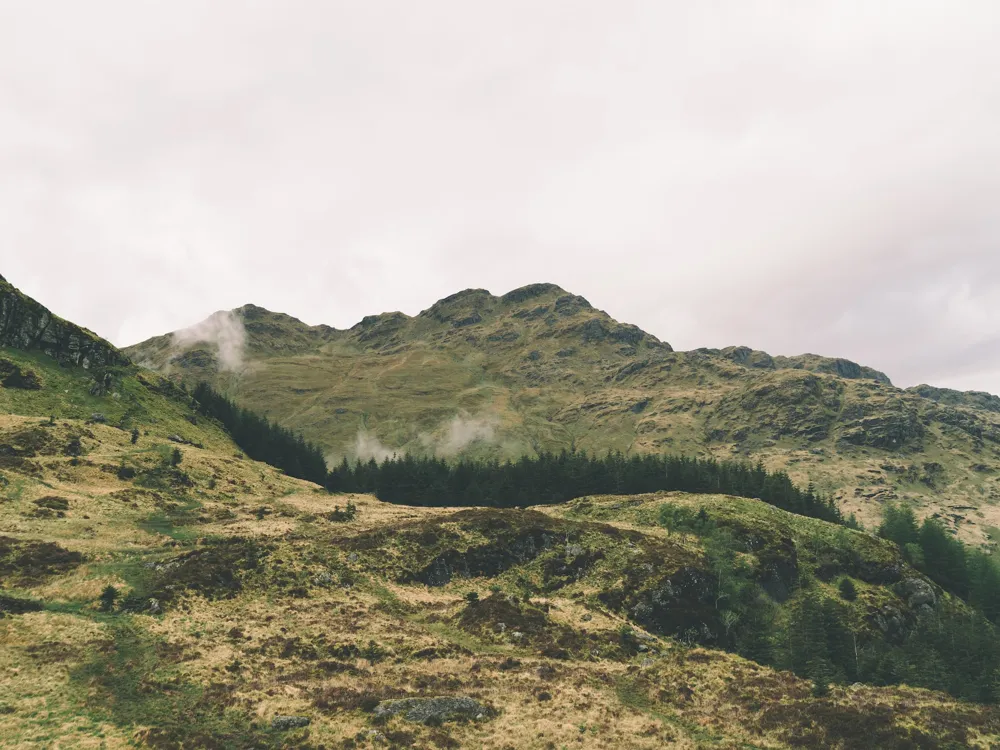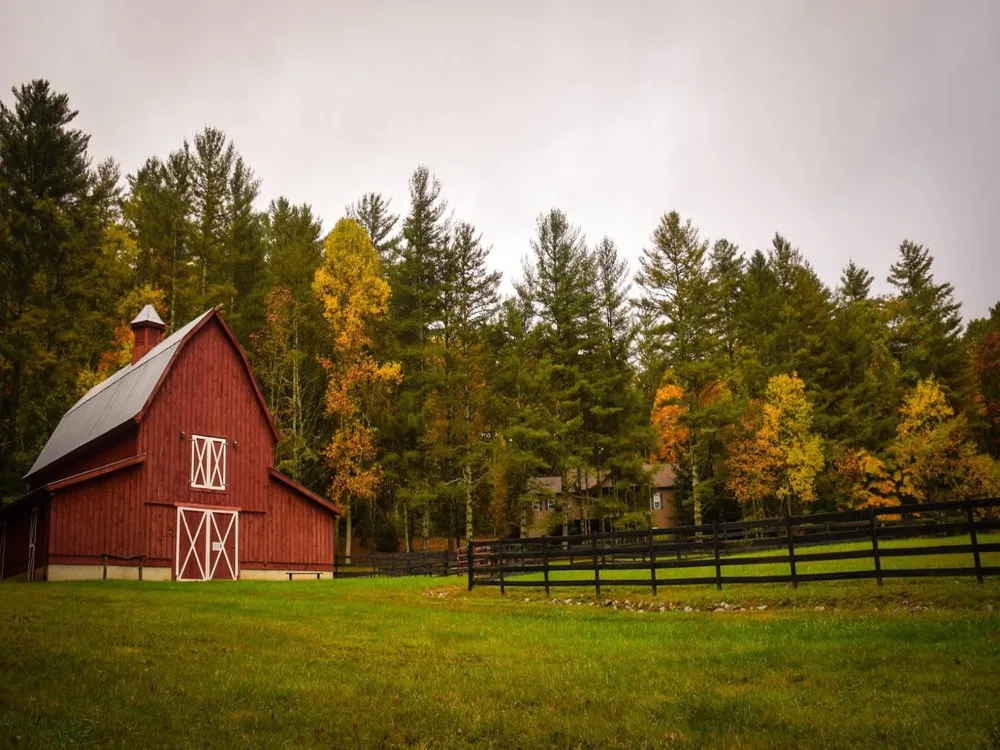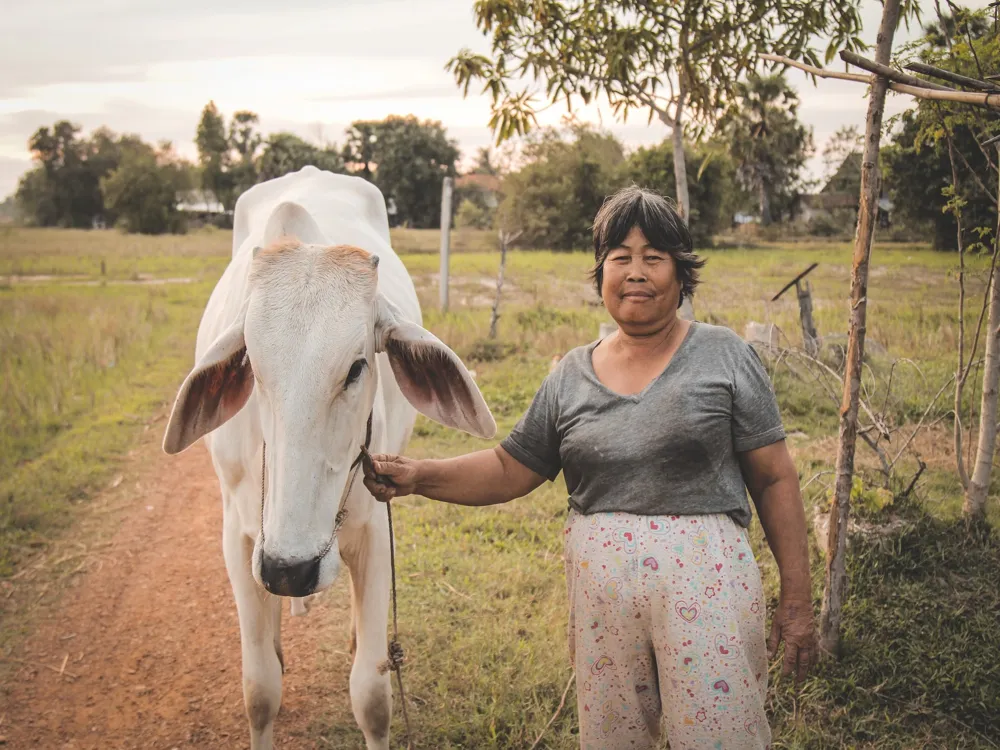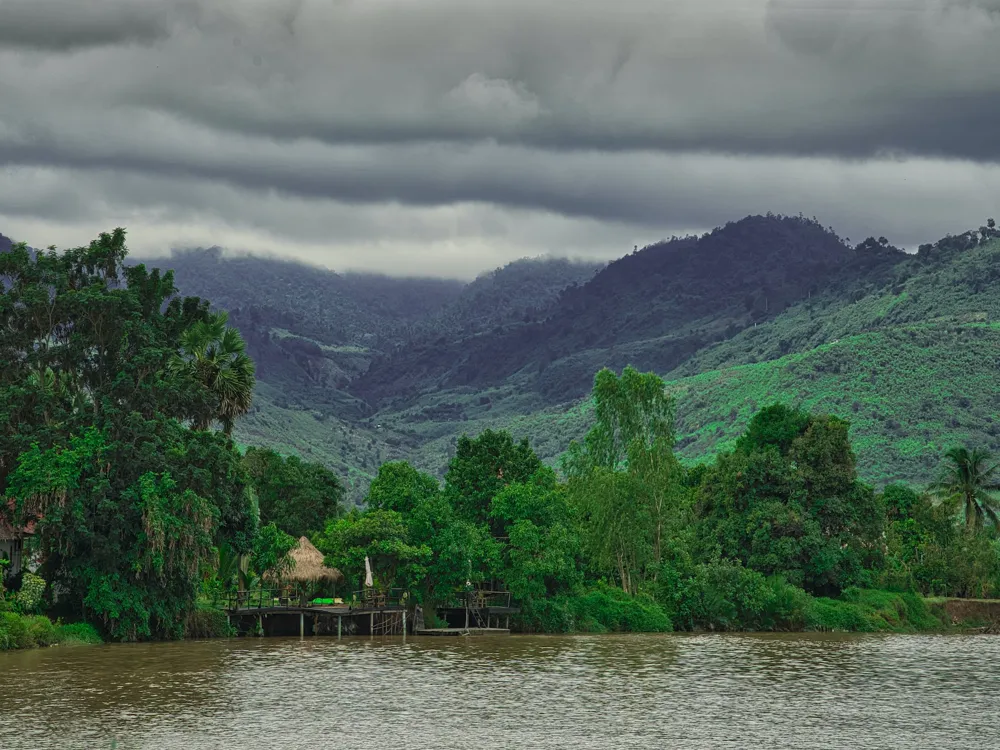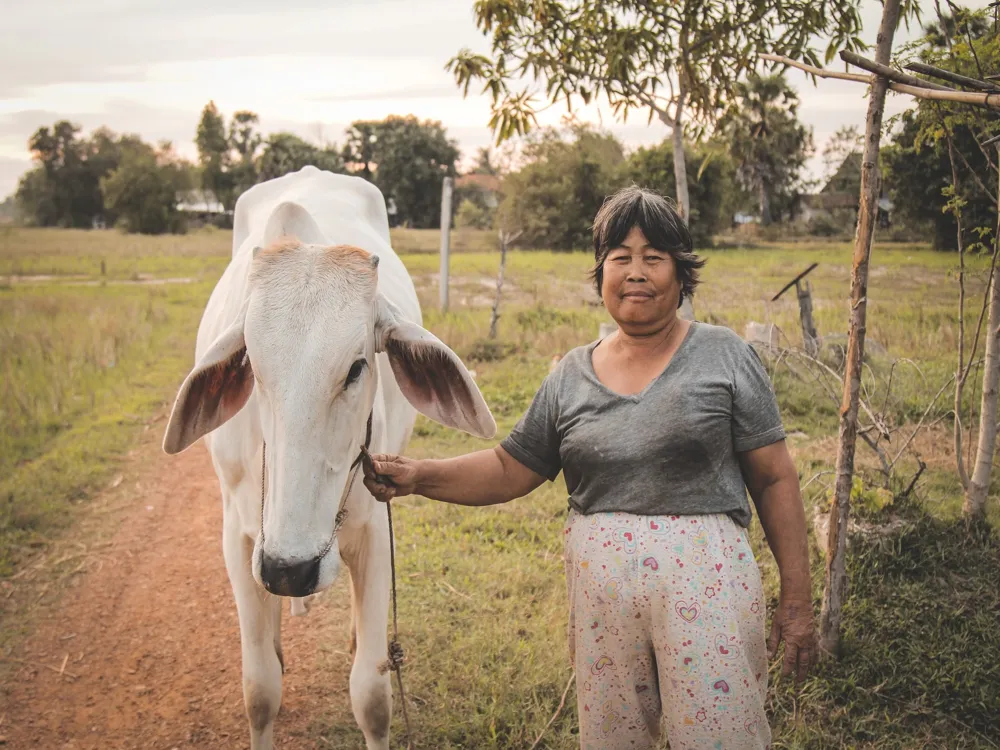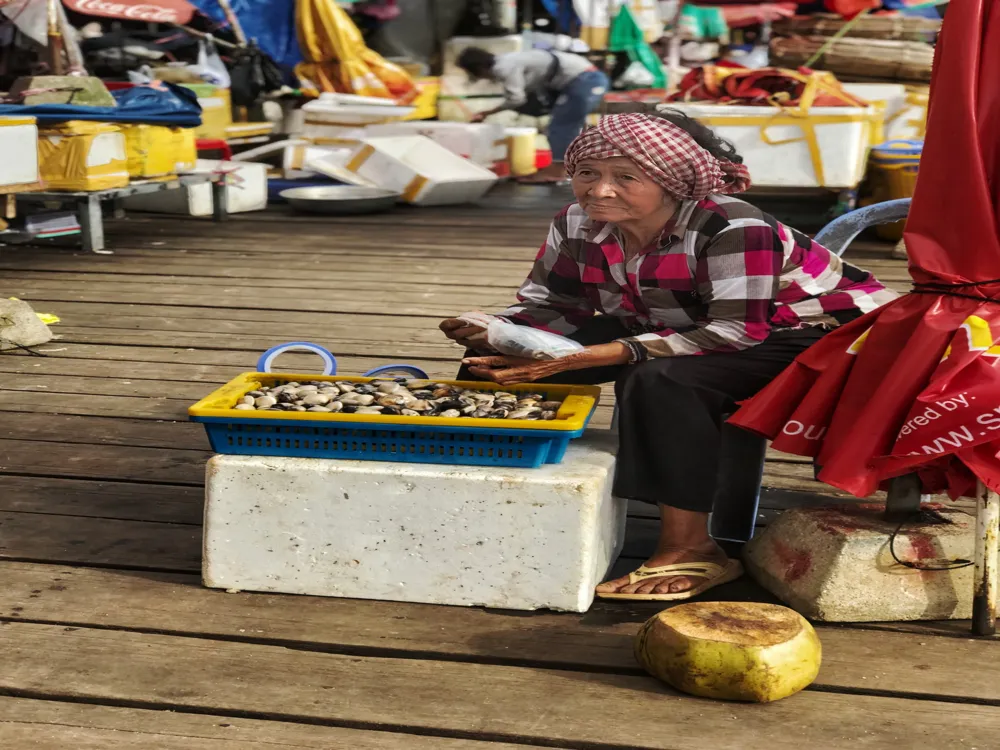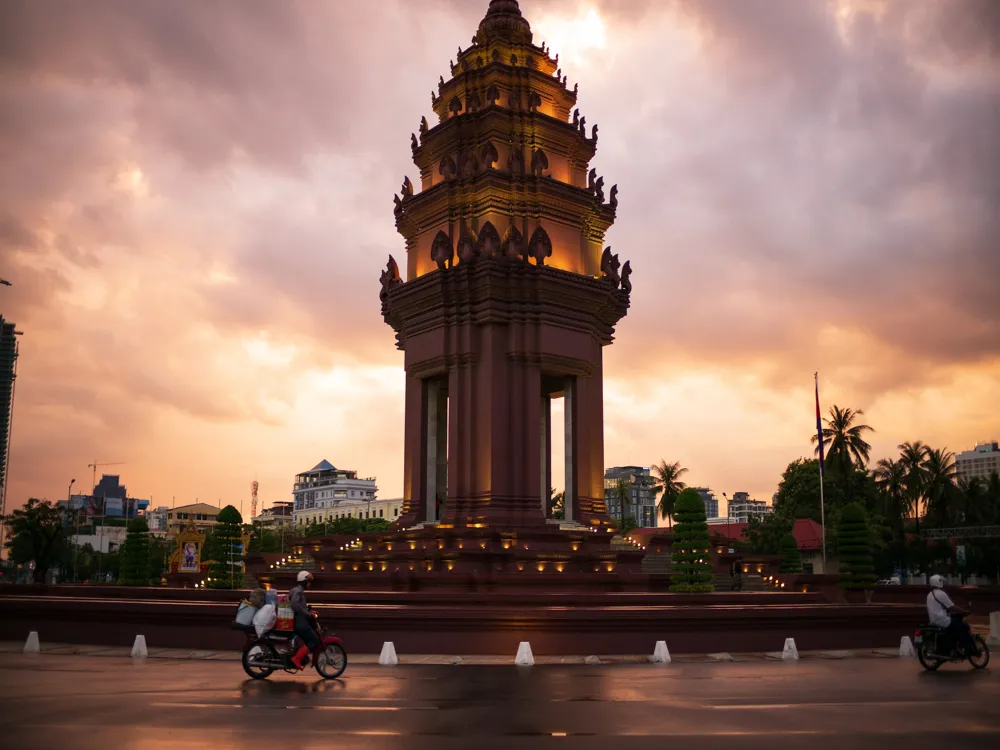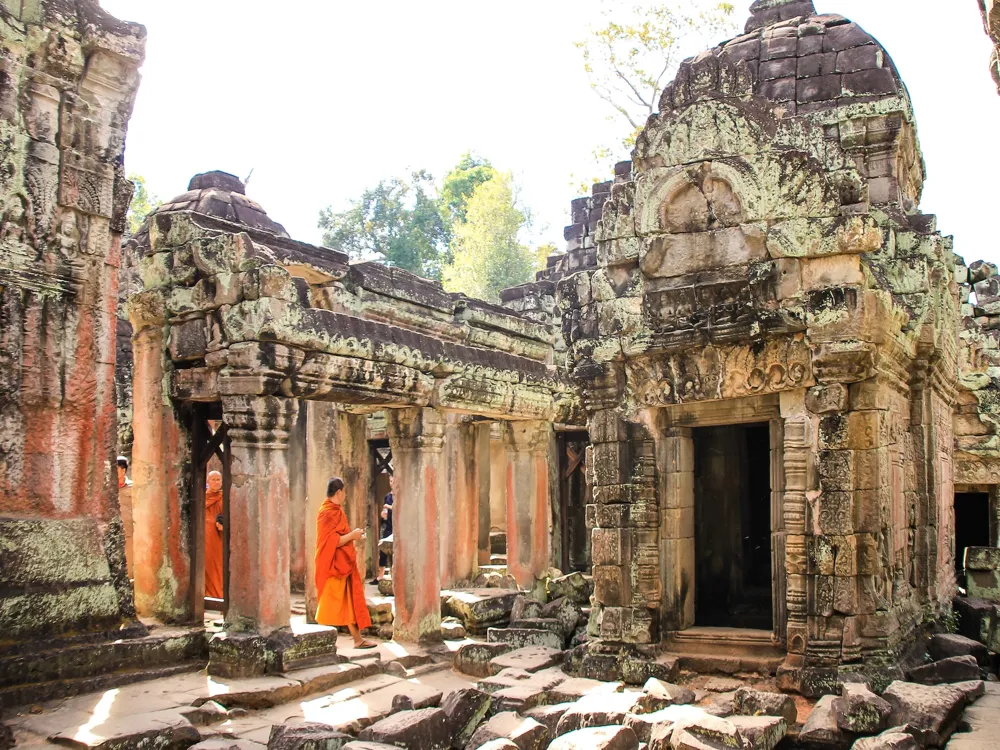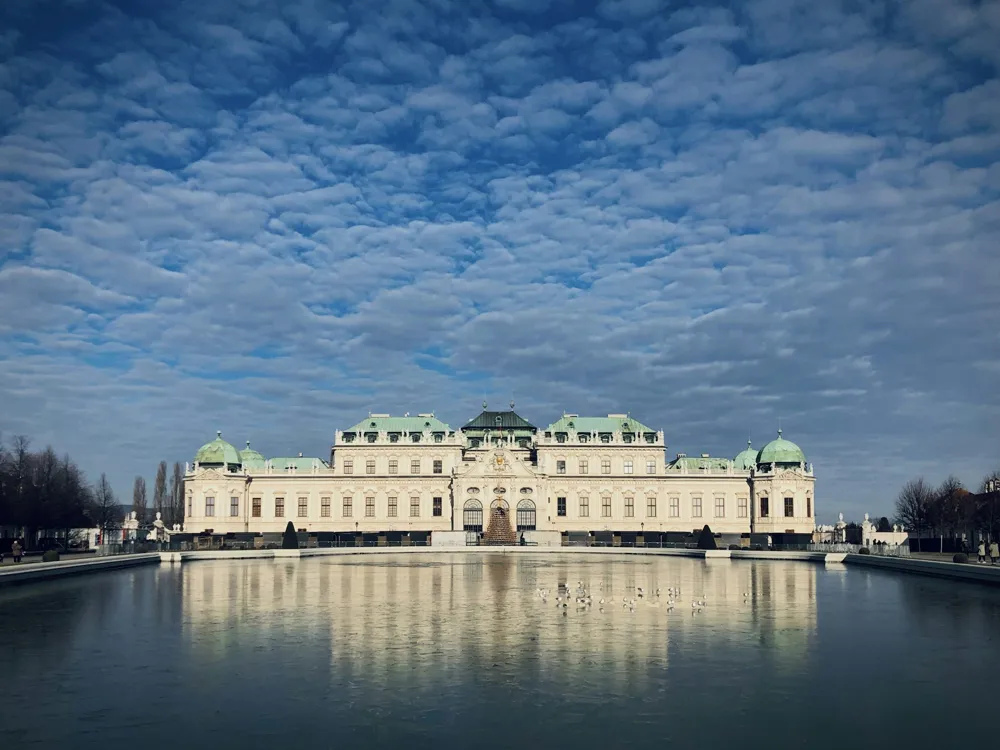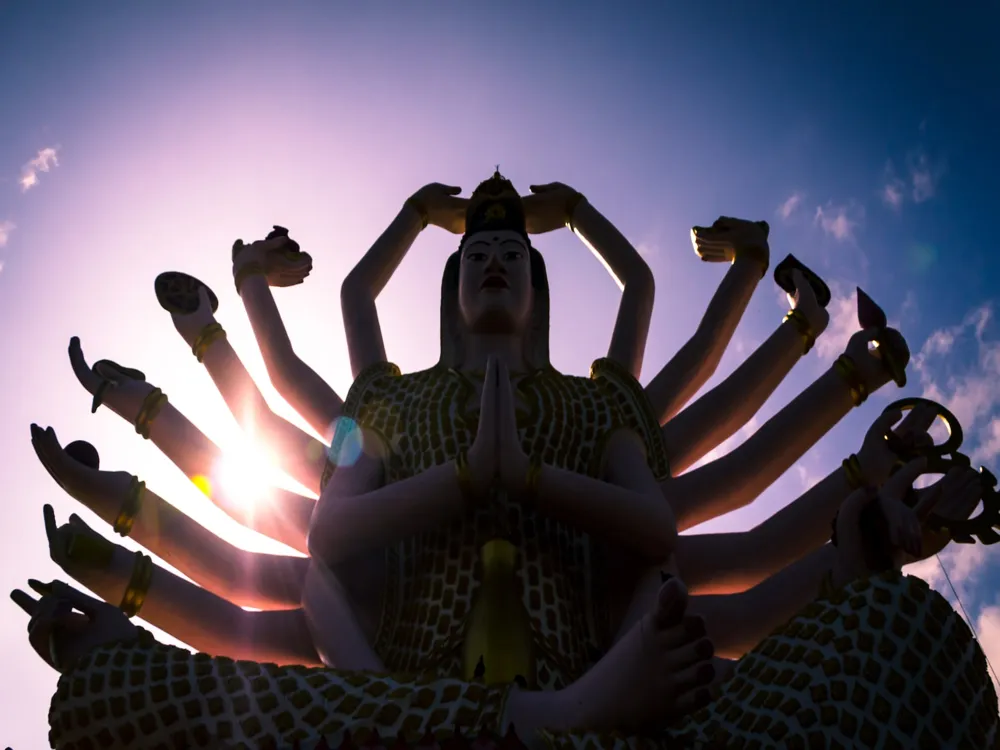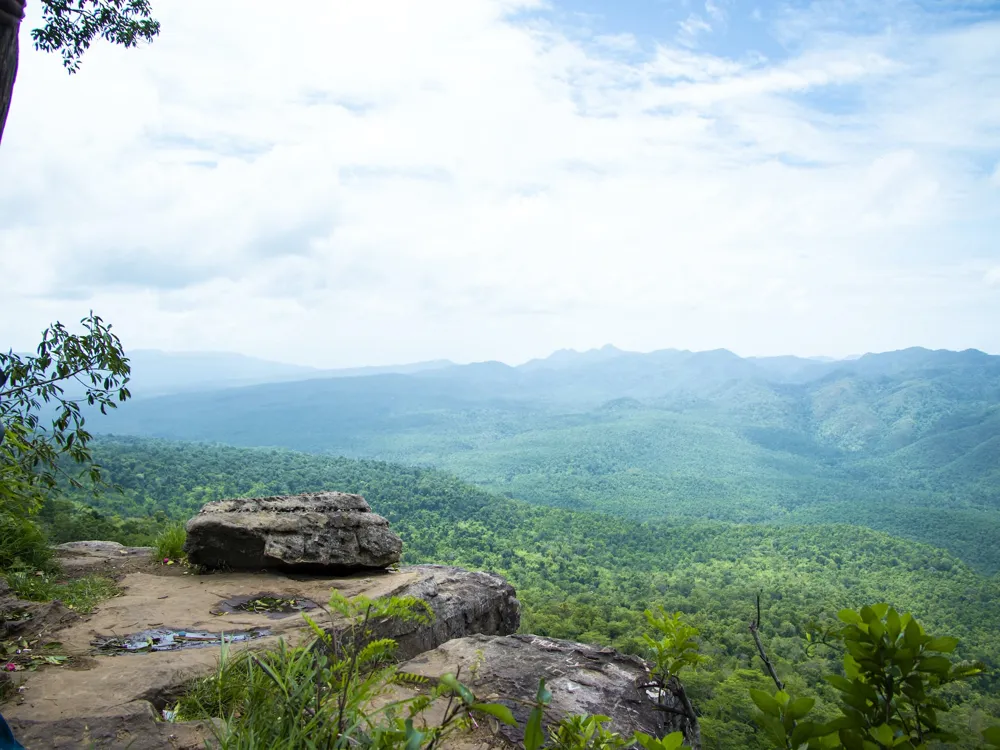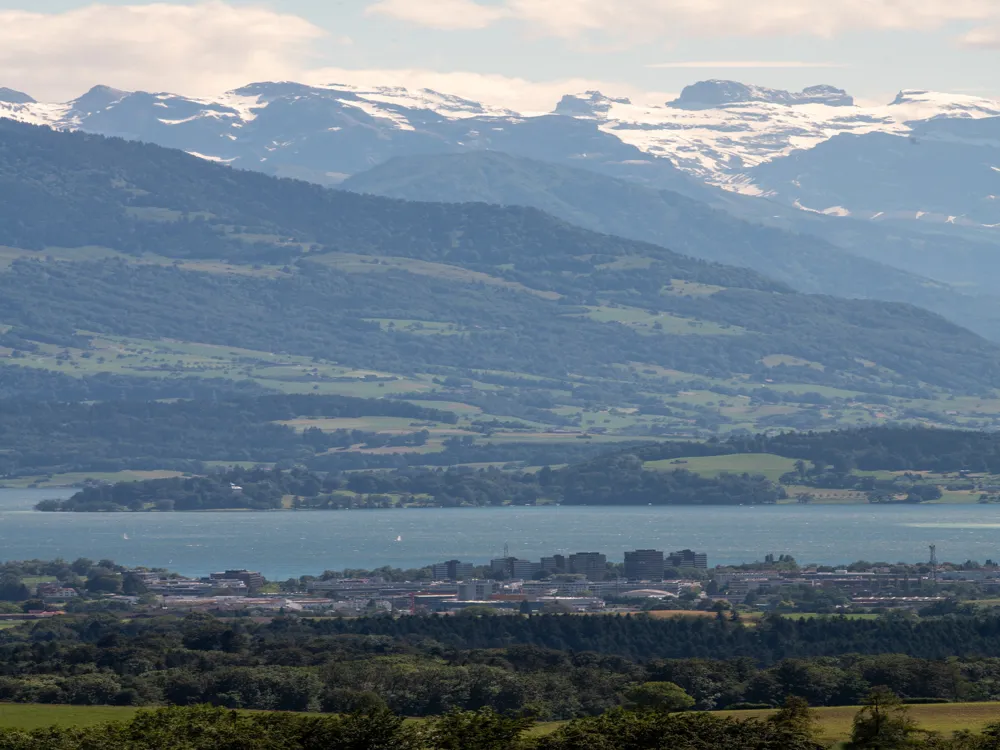The Phnom Chhngok Cave Temple, a hidden gem in Kampot, Cambodia, is a remarkable testament to the region's historical and cultural richness. Nestled in a stunning limestone cave, this temple dates back to the 7th century, making it one of the oldest Hindu temples in the country. As you approach the site, you are greeted by breathtaking natural landscapes, with the temple's entrance marked by a serenely flowing stream and lush greenery. The interior of the cave is a sanctuary of tranquility and spiritual aura, housing an ancient Shiva linga and a statue of a reclining cow, symbolizing the Hindu deity Nandi. The journey to the temple is as enchanting as the destination itself. Visitors traverse through picturesque paddy fields and small Cambodian villages, offering a glimpse into the rural life of the country. Upon reaching the base of the cave, a short but adventurous climb awaits, guiding explorers through the cave's natural wonders. Inside, the cave opens up to reveal an awe-inspiring scene of stalactites and stalagmites, with rays of sunlight filtering through crevices, creating an ethereal atmosphere. The temple's historical significance is deeply rooted in Cambodia's past. It is a relic of the Funan era, a period marked by the spread of Hinduism throughout Southeast Asia. This temple is not just a place of worship but also a symbol of the syncretism between Indian and Southeast Asian cultures. The intricate carvings and the architectural design reflect the influence of early Hindu traditions, blended seamlessly with the natural cave structure. Despite its age, the temple stands as a resilient beacon of history, having withstood the test of time and the shifts in religious practices in Cambodia. The Phnom Chhngok Cave Temple is more than just a historical site; it is a journey into the heart of Cambodian heritage. It offers a unique blend of natural beauty, spiritual significance, and historical intrigue, making it a must-visit destination for those exploring the depths of Cambodia's rich cultural tapestry. The architecture of Phnom Chhngok Cave Temple is a mesmerizing fusion of natural and man-made elements, seamlessly integrated to create a sacred space that has stood the test of time. Carved into a limestone cave, the temple showcases the ingenuity and craftsmanship of its ancient builders. The natural contours of the cave have been skillfully utilized to enhance the temple's aesthetic and spiritual appeal. The walls and ceilings, sculpted by nature, are adorned with delicate carvings and inscriptions that tell tales of Hindu mythology and the temple's historical significance. One of the most striking features of the temple is its entrance – a narrow opening that leads into a spacious chamber. This transition from a constricted space to an expansive sanctuary symbolizes the journey from the material world into a realm of spiritual enlightenment. The temple's main chamber houses the revered Shiva linga, a symbol of creation and destruction in Hindu mythology. This linga is not just a religious icon; it represents the fusion of Cambodian culture with Indian influences, evident in the temple's architectural style. The temple's layout is a testament to the skillful adaptation of architectural techniques to the cave's natural structure. The builders took advantage of the cave's acoustics, creating spaces that amplify the sounds of prayers and chants, adding to the mystical ambiance. The interplay of light and shadow within the cave further accentuates its sacred character, with natural light filtering through openings, creating a serene and otherworldly atmosphere. The use of local materials in the temple's construction reflects the builders' deep understanding of their environment. The limestone, shaped over centuries, provides not only a sturdy foundation but also a canvas for the temple's intricate carvings. These carvings, some still well-preserved, depict various deities and mythological scenes, offering insight into the religious beliefs and artistic expressions of the era. In summary, the architecture of Phnom Chhngok Cave Temple is a remarkable blend of natural wonder and human creativity. It stands as a symbol of the harmonious coexistence between man and nature and serves as a lasting tribute to the cultural and religious history of Cambodia. 1. Dress Appropriately: As a sacred site, it is important to dress modestly. Visitors should wear clothes that cover the shoulders and knees. This shows respect for the temple's cultural and religious significance. 2. Bring Comfortable Footwear: The trek to the temple involves a bit of climbing and walking on uneven surfaces. Sturdy, comfortable shoes are essential for a safe and enjoyable visit. 3. Stay Hydrated: The Cambodian climate can be hot and humid, especially during the trek to the cave. Carrying water will ensure you stay hydrated throughout your visit. 4. Hire a Local Guide: To fully appreciate the temple's history and architecture, consider hiring a local guide. They can provide valuable insights and stories that enrich the experience. 5. Be Mindful of the Environment: The cave temple is a natural and cultural treasure. Visitors should avoid littering and respect the natural environment and the temple's sanctity. 6. Photography Tips: The unique lighting inside the cave can make photography challenging. A camera with good low-light performance or a smartphone with a night mode can capture better photos. 7. Check Opening Hours: Make sure to check the opening hours before planning your visit, as they may vary seasonally or during religious events. 8. Plan Your Visit During Off-Peak Hours: Visiting early in the morning or later in the afternoon can help avoid the crowds and experience the temple in a more serene setting. 9. Respect Religious Practices: If you witness any religious ceremonies or practices, maintain a respectful distance and avoid interrupting. 10. Be Prepared for Limited Facilities: The temple is located in a rural area, so facilities like restrooms and restaurants may be limited. Plan accordingly. Reaching Phnom Chhngok Cave Temple is an adventure in itself, offering visitors a glimpse into the scenic beauty and rural life of Cambodia. The temple is located about 9 kilometers southwest of Kampot town. The most common way to reach the temple is by hiring a tuk-tuk or a motorbike from Kampot. The journey takes approximately 30 to 45 minutes, depending on the mode of transportation and road conditions. For those seeking a more immersive experience, cycling to the temple is a great option. It allows visitors to take in the picturesque landscapes at a leisurely pace. The route passes through tranquil villages, and rice fields, and offers stunning views of the Cambodian countryside. However, it's important to be prepared for the heat and have a map or a GPS device handy, as some parts of the route may not be well-marked. Alternatively, organized tours are available from various travel agencies in Kampot. These tours often include a guide and combine a visit to the Phnom Chhngok Cave Temple with other nearby attractions, providing a comprehensive experience of the region's cultural and natural highlights. Regardless of the mode of transportation, the journey to Phnom Chhngok Cave Temple is part of the allure, offering visitors a chance to connect with the Cambodian landscape and its people. Read More: Overview of Phnom Chhngok Cave Temple in Kampot
Architecture of Phnom Chhngok Cave Temple
Tips When Visiting Phnom Chhngok Cave Temple
Click to expand
How To Reach Phnom Chhngok Cave Temple
Phnom chhngok cave temple
Kampot
NaN onwards
View kampot Packages
Weather :
Tags : Temple
Timings : 8 AM to 5 PM
Time Required : 2 to 3 hours
Entry Fee : 1 USD
Planning a Trip? Ask Your Question
Kampot Travel Packages
View All Packages For Kampot
Top Hotel Collections for Kampot

Private Pool

Luxury Hotels

5-Star Hotels

Pet Friendly
Top Hotels Near Kampot
Other Top Ranking Places In Kampot
View All Places To Visit In kampot
View kampot Packages
Weather :
Tags : Temple
Timings : 8 AM to 5 PM
Time Required : 2 to 3 hours
Entry Fee : 1 USD
Planning a Trip? Ask Your Question
Kampot Travel Packages
View All Packages For Kampot
Top Hotel Collections for Kampot

Private Pool

Luxury Hotels

5-Star Hotels

Pet Friendly







